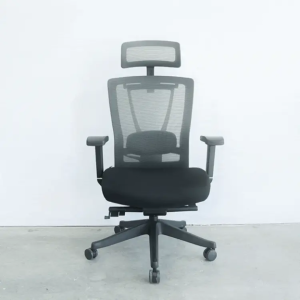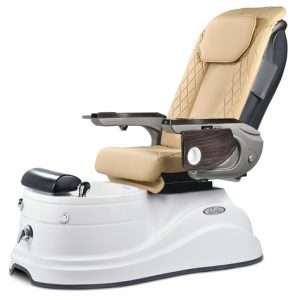Are you experiencing issues with your beloved glider rocking chair? Don’t worry! In this step-by-step guide, we will walk you through the process of fixing a glider rocking chair. Whether it’s a squeaky noise, a wobbly frame, or a stuck mechanism, we’ve got you covered. Our step-by-step instructions and expert tips will help you restore your glider rocking chair to its former glory instead of buying a new rocking chair for your comfort. So let’s dive in and learn how to fix a glider rocking chair like a pro!
Understanding the Anatomy of a Glider Rocking Chair
Before we delve into the process of fixing a glider rocking chair, it’s essential to familiarize ourselves with its basic components. Understanding the anatomy will enable us to identify the problem areas accurately and proceed with the necessary repairs. A typical glider rocking chair consists of the following components:
- Frame: The sturdy structure that supports the entire chair.
- Bearings: The mechanisms that allow the chair to glide smoothly back and forth.
- Upholstery: The fabric or cushioning that provides comfort and aesthetics.
- Screws and Bolts: The fasteners that hold the chair together.
- Glider Mechanism: The hardware responsible for the gliding motion.
Now that we have a basic understanding of the glider rocking chair’s anatomy, let’s move on to the common issues you may encounter.
Common Issues with Glider Rocking Chairs
Glider rocking chairs, like any other piece of furniture, can develop various issues over time. Here are some of the most common problems you may face:
- Squeaking or creaking noises when rocking.
- Unstable or wobbly frame.
- Stuck or malfunctioning glider mechanism.
- Loose or missing screws and bolts.
- Worn-out or damaged upholstery.
- Lackluster finish due to scratches or wear.
Now that we know the common issues, let’s gather the necessary tools and materials to fix them.
Tools and Materials You’ll Need
To fix a glider rocking chair, you’ll need a few essential tools and materials. Here’s a list of what you’ll need:
Tools:
- Screwdriver (both flathead and Phillips)
- Allen wrench set
- Pliers
- Hammer
- Rubber mallet
- Drill (optional)
- Sandpaper (medium and fine grit)
- Paintbrushes
- Upholstery needle and thread
Materials:
- Replacement bearings
- Wood glue
- Lubricating oil or silicone spray
- Wood filler
- Stain or paint (if necessary)
- Upholstery fabric or cushioning (if necessary)
- Upholstery adhesive
Now that you have all the necessary tools and materials, let’s dive into the step-by-step guide on how to fix a glider rocking chair.
How to Fix a Glider Rocking Chair: Step-by-Step Guide
1. Tightening Loose Screws and Bolts
One of the most common issues with glider rocking chairs is loose screws and bolts. Follow these steps to tighten them:
- Start by inspecting the chair for any visible loose screws or bolts.
- Use a screwdriver or Allen wrench, depending on the type of fastener, to tighten them securely.
- If the holes are stripped or the screws/bolts no longer hold, remove them and fill the holes with wood filler.
- Once the wood filler is dry, reinsert the screws/bolts and tighten them.
2. Replacing Worn-out Bearings
Over time, the bearings of a glider rocking chair can wear out, resulting in a rough or uneven gliding motion. Here’s how to replace them:
- Flip the chair over and locate the bearings.
- Remove the old bearings by unscrewing or detaching them from the frame.
- Clean the area thoroughly to remove any debris or old lubricant.
- Install the new bearings according to the manufacturer’s instructions.
- Apply a lubricating oil or silicone spray to ensure smooth gliding.
3. Fixing a Squeaky Glider Rocking Chair
Squeaky noises can be bothersome when enjoying a peaceful rocking motion. Here’s how to silence those squeaks:
- Identify the source of the squeak by rocking the chair and listening for the noise.
- Apply lubricating oil or silicone spray to the joints and moving parts of the glider mechanism.
- If the squeak persists, try tightening any loose screws or bolts in the problem area.
- If all else fails, consider applying a small amount of wood glue to the joints to provide extra stability and eliminate the noise.
4. Repairing a Stuck Glider Mechanism
If your glider rocking chair gets stuck or fails to glide smoothly, follow these steps to fix the mechanism:
- Remove the cushions or upholstery to access the glider mechanism.
- Inspect the mechanism for any visible obstructions, such as dirt, debris, or loose parts.
- Clean the mechanism using a soft brush or cloth to remove any dirt or debris.
- Lubricate the moving parts with a lubricating oil or silicone spray to ensure smooth operation.
- If the glider mechanism is severely damaged or beyond repair, consider replacing it with a new one.
5. Restoring the Finish of a Glider Rocking Chair
If your glider rocking chair’s finish has become dull or damaged, you can restore its beauty with these steps:
- Start by sanding the chair’s surface with medium-grit sandpaper to remove any roughness or imperfections.
- Follow up with fine-grit sandpaper to smoothen the surface further.
- Wipe away the sanding dust with a clean cloth.
- Apply a wood stain or paint of your choice, following the manufacturer’s instructions. Ensure you choose a product that is suitable for the type of wood your chair is made of.
- Use a paintbrush to evenly apply the stain or paint, working in the direction of the wood grain.
- Allow the finish to dry completely before applying a second coat if desired.
- Once the final coat is dry, apply a clear protective finish, such as polyurethane, to seal and protect the wood.
6. Replacing Damaged Upholstery
If your glider rocking chair’s upholstery is worn-out or damaged, follow these steps to replace it:
- Remove the existing upholstery carefully, taking note of the attachment points and any fasteners.
- Measure the dimensions of the removed upholstery to ensure you purchase the correct replacement fabric or cushioning.
- Cut the new upholstery material to the appropriate size, leaving some excess for a secure fit.
- Attach the new upholstery to the chair using upholstery adhesive or by sewing it in place with an upholstery needle and thread.
- Ensure the fabric is smooth and taut, avoiding any wrinkles or sagging.
7. Preventive Maintenance for Glider Rocking Chairs
To keep your glider rocking chair in excellent condition for years to come, follow these preventive maintenance tips:
- Regularly clean the chair with a mild soap and water solution to remove dust and debris.
- Inspect the chair for any loose screws, bolts, or fasteners and tighten them as needed.
- Lubricate the glider mechanism at least once a year to ensure smooth and silent operation.
- Avoid placing excessive weight on the chair, as it may strain the frame or mechanism.
- Keep the chair away from direct sunlight or extreme temperature and humidity conditions to prevent wood warping or upholstery damage.
FAQs
- Q: How often should I lubricate the glider rocking chair?
- It is recommended to lubricate the glider mechanism at least once a year to maintain optimal performance and minimize squeaks.
- Q: Can I use any type of wood glue to fix loose joints?
- It is best to use a high-quality wood glue that is specifically designed for furniture repairs. These glues provide strong adhesion and durability.
- Q: Can I paint the glider rocking chair with any type of paint?
- When painting a glider rocking chair, it is advisable to use a paint that is suitable for wood surfaces and offers durability, such as acrylic or latex paint.
- Q: How do I know if the bearings need to be replaced?
- If the glider rocking chair does not glide smoothly or produces a grinding or uneven motion, it’s likely that the bearings are worn-out and need replacement.
- Q: Can I wash the upholstery fabric of the glider rocking chair?
- It depends on the specific fabric. Check the manufacturer’s instructions or tags on the upholstery for cleaning recommendations. Some fabrics may be machine washable, while others may require professional cleaning.
- Q: How can I prevent the wood finish from getting scratched?
- To prevent scratches on the wood finish, use coasters or felt pads under any items placed on the chair, and avoid dragging or sliding heavy objects across the surface.
Conclusion
In conclusion, fixing a glider rocking chair is a manageable task that can be accomplished with a little time and effort. By tightening loose screws, replacing worn-out bearings, addressing squeaks, fixing stuck mechanisms, restoring the finish, and replacing damaged upholstery, you can bring new life to your beloved chair. Remember to follow proper maintenance practices to prevent future issues and ensure the longevity of your glider rocking chair.
So, don’t let those creaks and wobbles discourage you! Roll up your sleeves, gather your tools, and get ready to fix your glider rocking chair like a pro. With the knowledge and skills you’ve gained from this guide, you can enjoy the gentle gliding motion and comfort that this timeless piece of furniture provides.





